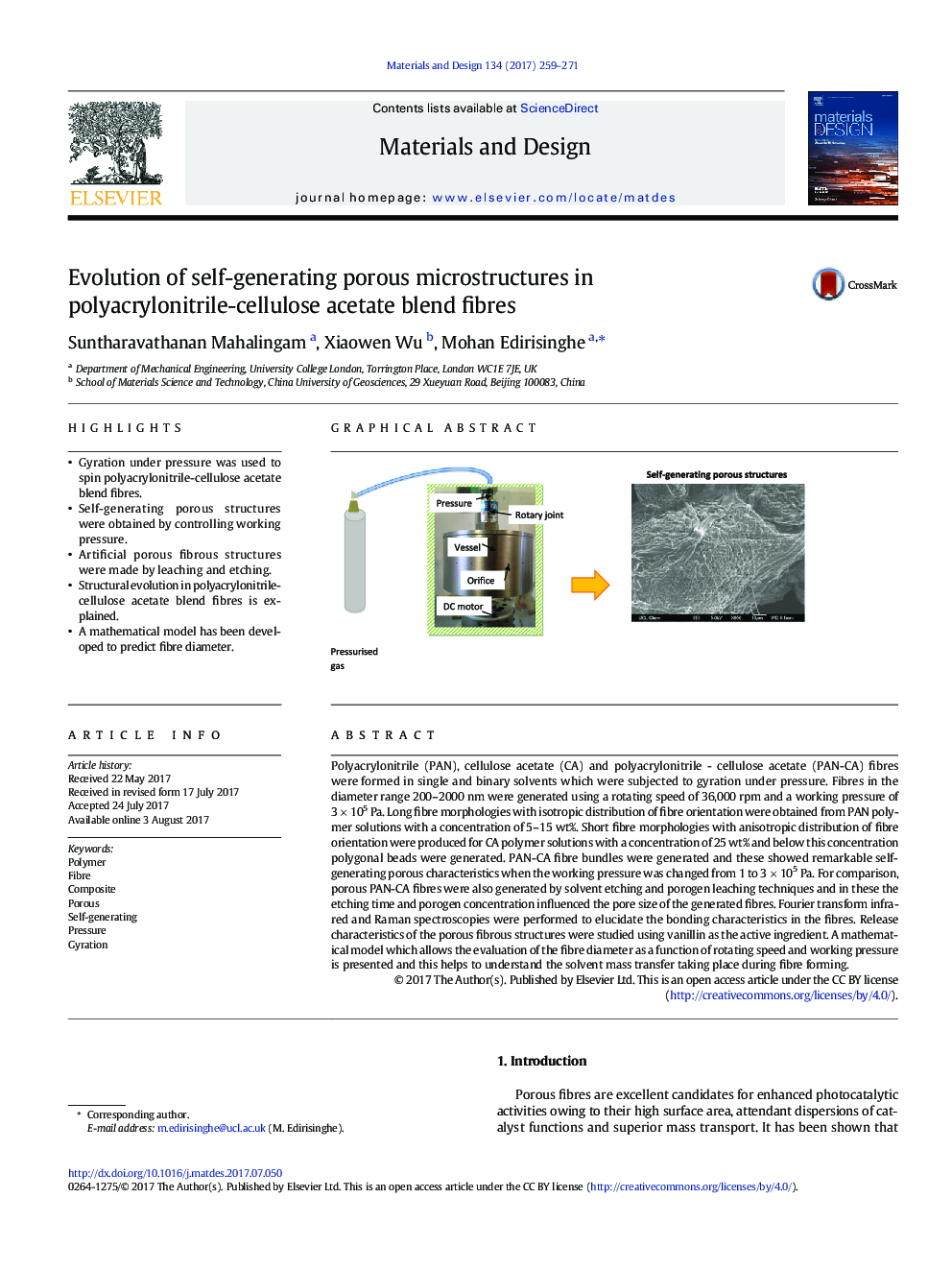| کد مقاله | کد نشریه | سال انتشار | مقاله انگلیسی | نسخه تمام متن |
|---|---|---|---|---|
| 5023287 | 1470248 | 2017 | 13 صفحه PDF | دانلود رایگان |
- Gyration under pressure was used to spin polyacrylonitrile-cellulose acetate blend fibres.
- Self-generating porous structures were obtained by controlling working pressure.
- Artificial porous fibrous structures were made by leaching and etching.
- Structural evolution in polyacrylonitrile-cellulose acetate blend fibres is explained.
- A mathematical model has been developed to predict fibre diameter.
Polyacrylonitrile (PAN), cellulose acetate (CA) and polyacrylonitrile - cellulose acetate (PAN-CA) fibres were formed in single and binary solvents which were subjected to gyration under pressure. Fibres in the diameter range 200-2000Â nm were generated using a rotating speed of 36,000Â rpm and a working pressure of 3Â ÃÂ 105Â Pa. Long fibre morphologies with isotropic distribution of fibre orientation were obtained from PAN polymer solutions with a concentration of 5-15Â wt%. Short fibre morphologies with anisotropic distribution of fibre orientation were produced for CA polymer solutions with a concentration of 25Â wt% and below this concentration polygonal beads were generated. PAN-CA fibre bundles were generated and these showed remarkable self-generating porous characteristics when the working pressure was changed from 1 to 3Â ÃÂ 105Â Pa. For comparison, porous PAN-CA fibres were also generated by solvent etching and porogen leaching techniques and in these the etching time and porogen concentration influenced the pore size of the generated fibres. Fourier transform infrared and Raman spectroscopies were performed to elucidate the bonding characteristics in the fibres. Release characteristics of the porous fibrous structures were studied using vanillin as the active ingredient. A mathematical model which allows the evaluation of the fibre diameter as a function of rotating speed and working pressure is presented and this helps to understand the solvent mass transfer taking place during fibre forming.
261
Journal: Materials & Design - Volume 134, 15 November 2017, Pages 259-271
